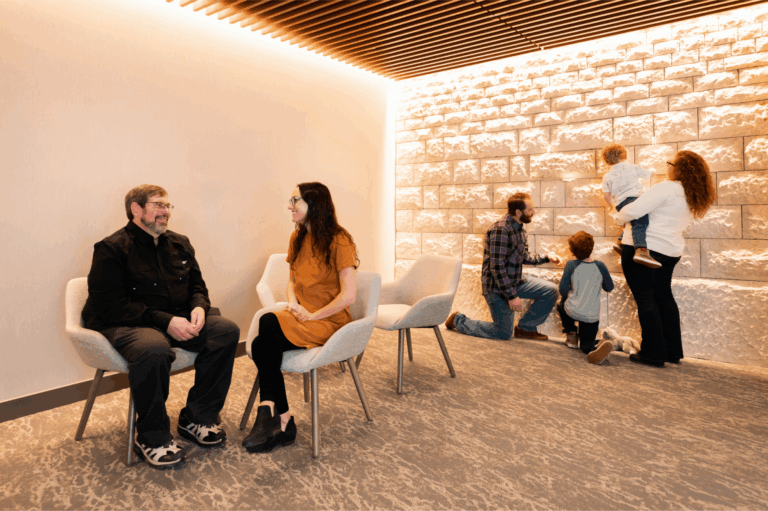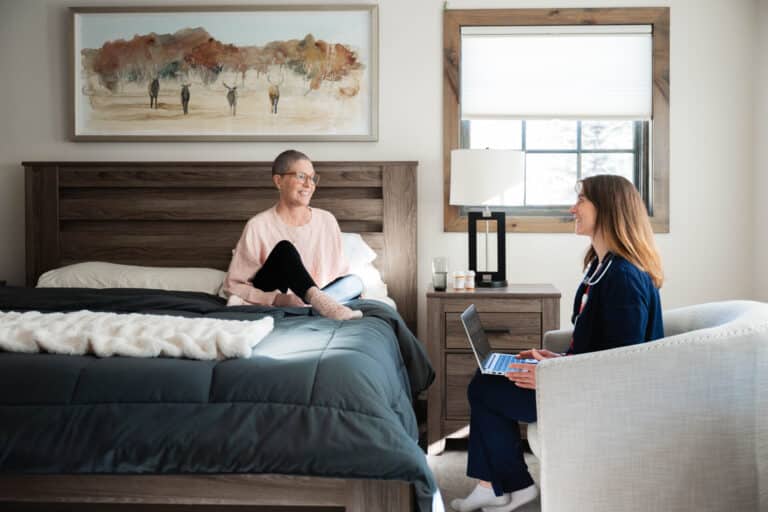Tips for Managing Seasonal Affective Disorder (During a Pandemic)

It’s been a challenging year, and that’s putting it mildly! Millions of Americans are still out of work, and COVID-19 cases are on the rise. Weary from pandemic fatigue and pandemic-related stress, we’re now carrying the emotional burden into the cold, short days of winter. It’s likely a double whammy for those who battle Seasonal Affective Disorder (SAD), sometimes known as the “Winter Blues.”
Surveys show that SAD, a type of depression characterized by recurrent seasonal patterns, affects 15 million adults, or nearly seven percent of the US population, and is equally common among men and women. While much less common, some people experience SAD in the summer.
Coupled with a recent CDC survey that reported that 40 percent of Americans struggle with mental health during the COVID-19 pandemic, the pandemic, along with SAD, may be a one-two mental health punch of seasonal affective disorder and stress.
Symptoms and Diagnosis
SAD’s common symptoms include fatigue, even with too much sleep, and weight gain associated with overeating and carbohydrate cravings. SAD may begin at any age, but it typically starts when a person is between ages 18 and 30. SAD symptoms can vary from mild to severe and can include many symptoms similar to major depression, such as:
- Feeling sad or having a depressed mood
- Lack of interest in activities you usually love doing
- Trouble getting out of bed in the morning
- Unusually long sleeping hours
- Crankiness and mood changes
- Weight gain (craving carbohydrates)
- Changes in the appetite
- Drop in the energy levels throughout the day
- Lack of focus
- Insomnia
- Feeling worthless or guilty
- Difficulty thinking, concentrating or making decisions
- Thoughts of death or suicide
What Causes SAD?
Although scientists don’t fully understand what causes SAD, it’s been linked to a biochemical imbalance in the brain prompted by shorter daylight hours and less sunlight in winter. As seasons change, people experience a shift in their internal biological clock or their circadian rhythm that can cause them to be out of step with their daily schedule. SAD is more common in people living far from the equator, where there are fewer daylight hours in the winter.
The Good News: Treatment is Available
If you suffer from SAD, even amid a pandemic, treatment is available. Light therapy, antidepressant medications, talk therapy, or some combination can effectively treat SAD. While symptoms will generally improve on their own with the change of season, symptoms can improve more quickly with treatment.
How COVID Impacts SAD
Although health experts have expressed concern about the pandemic and SAD clash, there is no evidence to support the predictions. Since SAD wasn’t known during the 1918 pandemic, the relationship between COVID-19 and SAD isn’t fully understood.
What is known is that reduced opportunities to socialize during the holidays, and with people spending more time indoors, exposure to sunlight tends to drop further. Even people who have never experienced seasonal affective disorder earlier in their life might become vulnerable to it this year. Those who usually experience mild symptoms might observe a slightly higher intensity of depression this year.
Tips to Manage SAD During the Pandemic
Here are some ways to alleviate the symptoms of SAD during the pandemic:
- Expose Yourself to Sunlight
Staying at home is considered the best way to stay safe and stop the spread of the coronavirus, but there are many ways to ensure that your body gets enough sunlight every day. Spending a few minutes daily in your backyard or even going for a short walk in your neighborhood can give your body its daily dose of vitamin D from sunlight.
Light therapy delivered by a tabletop lightbox (or light therapy lamp) is another easy option. Light from one of these boxes is much more intense than light from a standard light bulb, about 80 lumens, or lux. The standard of care for the treatment of SAD is 10,000 lux. The lightbox should be placed in front of you every day for 30 minutes. For it to be effective, you must keep your eyes open—it’s not like sunbathing.
- Seek Professional Help
Talk to your doctor or a local therapist if you usually don’t experience SAD symptoms and suddenly notice them this year. It would also be time to visit a behavioral health specialist if you notice your usual symptoms worsening this year. There are various treatments available for SAD, including phototherapy. Psychotherapy can also help individuals who are having suicidal thoughts or extreme depression during the winter months. Depending on the symptoms, some patients might receive anti-depressant medication if required.
- Get Into and Maintain Routines
Changes in your body’s natural clock (or circadian rhythm) are among SAD’s leading causes. The pandemic has wreaked havoc on people’s routines, but reestablishing them can help minimize SAD’s risks and symptoms during COVID times. Sleep, wake, eat and exercise on a regular schedule.
- Connect with Others
Talk with people you trust about your concerns and how you are feeling. When you can’t be together, use Zoom, Facetime, or other platforms to stay in touch with friends and family.
- Practice Mindful Meditation
Mindful meditation is a promising effective treatment for depression. It can help you navigate the many ways that anxiety and depression can disorder your life. It allows you to suspend judgment and focus on warmth and kindness — to yourself and others. There are several meditation apps and YouTube meditation opportunities available.
You don’t have to struggle with anxiety and depression alone. Getting the right help will allow you to live life to the fullest. Whether you’re looking for a therapist or are seeking a support group, Eagle Valley Behavioral Health stands ready to help. We’ll do everything we can to make sure financial barriers don’t stand in the way of ensuring that you are mentally healthy, even during this extraordinarily trying time.


